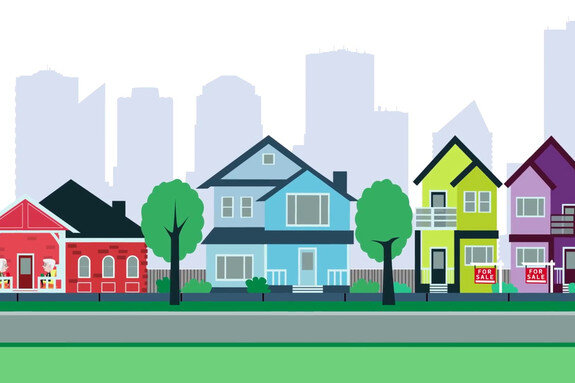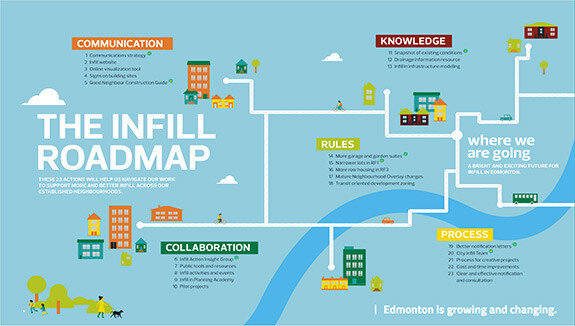Evolving Infill
Recently, the Edmonton City Council committee on Urban Planning received an update on the Evolving Infill strategy. Edmonton has seen some of the highest rates of growth and development in recent years, with increasing numbers of people choosing to call Edmonton home. It is imperative that Council and City Administration ensure there is a variety of housing options not only in our greenfield developments, but also in our lower populated mature neighbourhoods.
There are a number of social, environmental, and economic benefits to infill such as ensuring schools have sufficient enrollment, the saving of agricultural land, and less duplicated infrastructure and services - to name a few. Over my time on council, I have been a vocal proponent of infill projects when they make sense for the given neighbourhood. The City of Edmonton wants to ensure we are creating infill that makes sense for our communities needs, as a result the city administration created the Evolving Infill report which includes a market housing and affordability study, municipal tools review, stakeholder engagement results, as well as an overview of the history and evolution of Edmonton neighbourhoods. Together, these reports provide a comprehensive overview of where the city has been in regards to infill, and where we need to go.
I was very pleased that at the July 3rd meeting of the Urban Planning committee, several members of the community spoke to their positive experience during the engagement process. Engaging with community members on critical strategic items like infill must be a priority, and I was happy to see that this engagement garnered meaningful feedback. In 2014, Evolving Infill was created which set out a strategy to improve infill and building in Edmonton. The 2014 Infill Roadmap outlined 23 recommendations for the City to implement, of which 15 have been completed, with the remaining 8 recommendations still underway. The Infill Roadmap Statistics Report provides an update on some of the infill projects that have happened since 2014, including the exact number of new infill projects. Since 2014 we have gained critical insight on how infill affects communities, and as such the Infill Roadmap 2018 has built on that knowledge. The Infill Roadmap 2018 includes 25 bold suggestions on how to improve infill in Edmonton over the next two years. Recommendations include; reviewing infrastructure capacity in Edmonton’s older neighbourhoods and identify the infrastructure investments needed to support infill, developing tools to improve housing affordability in all neighbourhoods, and incentivizing the development of fully accessible and seniors friendly laneway homes. Edmonton City Council will review these strategic actions again in the coming months to ensure our progress is on track. These targets are inline will my platform goals of creating vibrant communities that have a variety of housing choice, having active school/community spaces and successful local businesses that provide products and services that support the vibrancy of the neighbourhood. I welcome any feedback you might have on the Evolving Infill strategy, and you are welcome to let me know your perspective by responding to this form or contacting me directly by email, phone, social media.
Written by A.Knack and M. Banister


